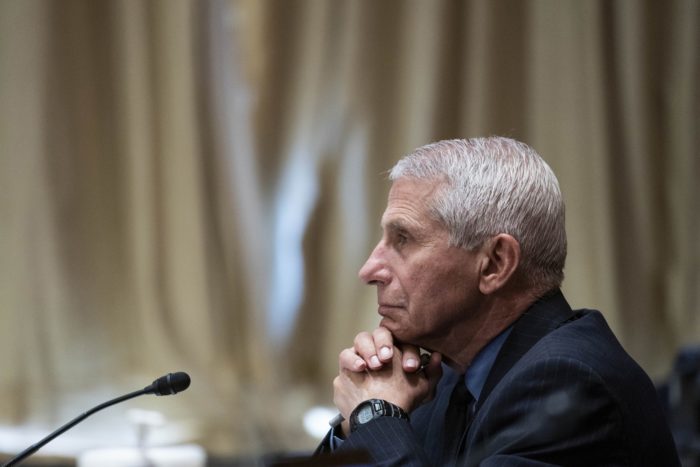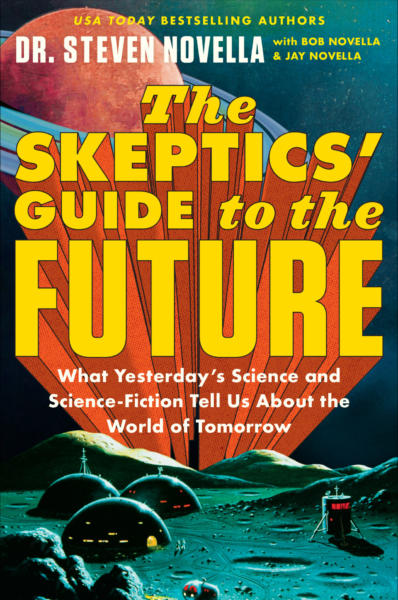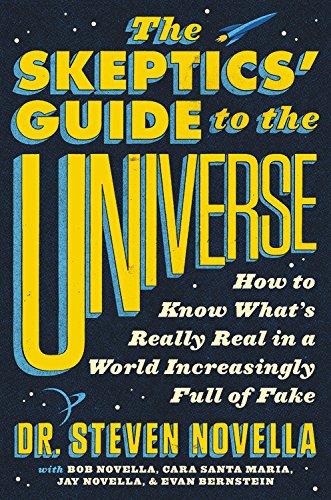Mar
15
2024
 Ah, the categorization question again. This is an endless, but much needed, endeavor within human intellectual activity. We have the need to categorize things, if for no other reason than we need to communicate with each other about them. Often skeptics, like myself, talk about conspiracy theories or grand conspiracies. We also often define exactly what we mean by such terms, although not always exhaustively or definitively. It is too cumbersome to do so every single time we refer to such conspiracy theories. To some extent there is a cumulative aspect to discussions about such topics, either here or, for example, on my podcast. To some extent I expect regular readers or listeners to remember what has come before.
Ah, the categorization question again. This is an endless, but much needed, endeavor within human intellectual activity. We have the need to categorize things, if for no other reason than we need to communicate with each other about them. Often skeptics, like myself, talk about conspiracy theories or grand conspiracies. We also often define exactly what we mean by such terms, although not always exhaustively or definitively. It is too cumbersome to do so every single time we refer to such conspiracy theories. To some extent there is a cumulative aspect to discussions about such topics, either here or, for example, on my podcast. To some extent I expect regular readers or listeners to remember what has come before.
For blog posts I also tend to rely on links to previous articles for background, and I have little patience for those who cannot bother to click these links to answer their questions or before making accusations about not having properly defined a term, for example. I don’t expect people to have memorized my entire catalogue, but click the links that are obviously there to provide further background and explanation. Along those lines, I suspect I will be linking to this very article in all my future articles about conspiracy theories.
What is a grand conspiracy theory? First a bit more background, about categorization itself. There are two concepts I find most useful when thinking about categories – operational definition and defining characteristics. An operational definition is one that essentially is a list of inclusion and exclusion criteria, a formula, that if you follow, will determine if something fits within the category or not. It’s not a vague description or general concept – it is a specific list of criteria that can be followed “operationally”. This comes up a lot in medicine when defining a disease. For example, the operational definition of “essential hypertension” is persistent (three readings or more) systolic blood pressure over 130 or diastolic blood pressure over 80.
Continue Reading »
Jul
13
2023
 It was recently revealed that the House subcommittee probing the origins of COVID-19 accidentally released a “trove” of documents related to their investigations. The documents include e-mails and internal communications among the scientists and experts who put together the first analysis of the proximal origin of SARS-CoV-2, published in Nature in March 2020. The documents reveal that there was a lot more discussion and credence given to the lab origin theory of SARS-CoV-2 in February 2020 than was reflected in the final published paper, which some see as evidence of a deliberate coverup. Further, because the documents are now publicly available, an army of online sleuths can pour over every word to find more evidence of something sinister.
It was recently revealed that the House subcommittee probing the origins of COVID-19 accidentally released a “trove” of documents related to their investigations. The documents include e-mails and internal communications among the scientists and experts who put together the first analysis of the proximal origin of SARS-CoV-2, published in Nature in March 2020. The documents reveal that there was a lot more discussion and credence given to the lab origin theory of SARS-CoV-2 in February 2020 than was reflected in the final published paper, which some see as evidence of a deliberate coverup. Further, because the documents are now publicly available, an army of online sleuths can pour over every word to find more evidence of something sinister.
Having looked through the reports myself, I don’t see anything unusual at all. Here is a typical exchange:
“I believe RaTG13 is from Yuanan, which is about as far away from Wuhan as you can be and still be in China,” Andersen wrote, referring to a virus that produced Covid-like symptoms in miners in 2013, a strain that was later stored and researched at the Wuhan Institute of Virology. “What are the chances of finding a viruses that are 96% identical given that distance? Seems strange given how many SARS-like viruses we have in bats.”
Rambaut responded on Slack suggesting they back off such interrogation. “I personally think we should get away from all the strange coincidence stuff. I agree it smells really fishy but without a smoking gun it will not do us any good,” he wrote. “The truth is never going to come out (if [lab] escape is the truth). Would need irrefutable evidence. My position is that the natural evolution is entirely plausible and we will have to leave it at that. Lab passaging might also generate this mutation but we have no evidence that that happened.”
These are scientists discussing through various possibilities. Remember, this was February 2020 – we knew virtually nothing about the virus, the origin of COVID, the source of the virus (we are still not sure about the animal vector), or what was happening at the Wuhan lab. We have the genetic sequence of the virus, that was it. You’ll note they are still talking about bats, a theory that was later refuted.
Continue Reading »
Jun
23
2023

RFK Jr., who is now running for the Democratic presidential nomination, is anti-vaccine. He will vehemently deny this, but I don’t buy it for a second. He is simply playing the, “I’m not anti-vaccine, I am pro-safe vaccine” gambit, which is disingenuous and always has been. We have been covering this topic for years, and David Gorski did a recent excellent review of this at SBM. You can’t claim not to be anti-vaccine, and then defend a long list of anti-vaccine tropes.
RFK has apparently been avoiding his views on vaccines on the campaign trail, but it always seems to come up. On the Joe Rogan podcast RFK found what he must have thought was a friendly environment, and felt free to repeat is claim that vaccine cause autism. This is a topic I have been covering for two decades – vaccines do not cause autism. But let’s do a quick review of this harmful claim.
This first appeared in the 1990, when the anti-vaccine movement hit upon the increase in autism diagnoses as a new tactic. They start with the assumption that all bad things that happen to children are caused by vaccines, so obviously they must also be causing the rise in autism. When Andrew Wakefield came out with his fraudulent and now retracted study claiming an association between the MMR vaccine and autism, he became an instant celebrity of the anti-vaccine movement. Trouble is – the MMR vaccine does not cause autism. Wakefield, it turns out, had a patent on an alternative vaccine and was trying to torpedo the competition. But the anti-vaccine movement does not let science, evidence, or basic logic get in their way. So they simply moved over to a vaccine ingredient, thimerosal, which is a mercury-based preservative.
Continue Reading »
May
04
2023
 I know this wasn’t the purpose of sending up a €4.3bn satellite into geostationary orbit, but tweaking flat earthers is a fun side effect. European countries have collaborated on this project, having weather satellites in orbit since 1977. The latest iteration is Meteostat-12, which was launched in December and is now in orbit 36,000 km above the equator. This means it will have a constant view of Europe, where it takes high resolution pictures every 10 minutes. The goal is to provide a constant stream of weather information surrounding Europe. Two more satellites are planned, which will keep Europe in weather data through the 2040s.
I know this wasn’t the purpose of sending up a €4.3bn satellite into geostationary orbit, but tweaking flat earthers is a fun side effect. European countries have collaborated on this project, having weather satellites in orbit since 1977. The latest iteration is Meteostat-12, which was launched in December and is now in orbit 36,000 km above the equator. This means it will have a constant view of Europe, where it takes high resolution pictures every 10 minutes. The goal is to provide a constant stream of weather information surrounding Europe. Two more satellites are planned, which will keep Europe in weather data through the 2040s.
If you believe the data coming back from Meteostat-12 it absolutely proves that the Earth is a globe. It also breaks a lot of the false claims of flat earthers. For example, because of the distance of the satellite it can take a picture of the entire Earth at once, without having to stitch multiple images together. In these pictures you can also clearly see the curvature of the Earth. The satellite is stationary so you don’t see the Earth rotating, but you do see day and night cycles, and you see weather patterns moving across the Earth. You are also seeing one hemisphere of the Earth. As evidence goes, this one is a complete slam-dunk.
But of course that initial caveat is the key – flat earthers will simply deny this evidence is real. But even there they should be squirming just a bit (if they weren’t already completely deluded). Flat earth conspiracy theories generally revolve around NASA, who, in their fevered imaginations, is an all-powerful organization that has been perpetrating the round earth hoax for, well, I guess longer than NASA has even been known to exist. However, the Meteostat-12 has exactly nothing to do with NASA. This is entirely a European project. This problem is easily “solved”, however – apparently NASA has control over the European Space Agency and all European governments as well.
Continue Reading »
Jan
31
2023
 Some ideas never seem to die. There is something compelling about the narrative, perhaps because it fills some explanatory need. One of those narratives is that “they” have “the cure” to cancer but are keeping it hidden from the public in order to protect the profits that result from cancer treatment. I recently received the following e-mail (partly redacted):
Some ideas never seem to die. There is something compelling about the narrative, perhaps because it fills some explanatory need. One of those narratives is that “they” have “the cure” to cancer but are keeping it hidden from the public in order to protect the profits that result from cancer treatment. I recently received the following e-mail (partly redacted):
“I read many articles by physicians like yourself that claim secrets cannot be kept about cancer cures. I beg to differ.
Pharmaceutical firms require their associates to sign confidentiality agreements as a condition of employment. If they breach it, it’s safe to assume that they risk grave consequences for doing so.
These companies could care less about sick people. They only care about the health of their bottom line. They make far more profit on lifetime treatments rather than one-shot cures. After the patent expiration on a cure, the steady stream of revenue comes to a halt.
A cure eliminates the need for any new drug development unless the side effects are unpalatable. I was even told as much by a retired employee of a pharmaceutical company. She saw the private memos from their lobbyists.
In any case, the confidentiality contracts are why secrets are kept in the pharmaceutical industry. It’s also why cancer cures can be kept hidden as it would be treated as a trade secret. No one wants to be brought up on a felony charge of industrial espionage. Nor do they wish to be sued for it by their former employer.
Ask yourself the following question: would you risk your family’s future under those circumstances? No way! If you signed one of those legal instruments, you would never divulge such information if you came across it.”
The notion that a pharmaceutical company could hide a cancer cure is, in my opinion, and from the perspective of an academic physician who has participated in clinical research for pharmaceutical companies, hopelessly naive. The belief comes partly from looking into a complex system from the outside, without any real idea how it actually works. First let’s talk about the science and then we’ll turn to the logistics of the conspiracy itself.
Continue Reading »
Jan
26
2023
 Grand conspiracy theories are a curious thing. What would lead someone to readily believe that the world is secretly run by evil supervillains? Belief in conspiracies correlates with feelings of helplessness, which suggests that some people would rather believe that an evil villain is secretly in control than the more prosaic reality that no one is in control and we live in a complex and chaotic universe.
Grand conspiracy theories are a curious thing. What would lead someone to readily believe that the world is secretly run by evil supervillains? Belief in conspiracies correlates with feelings of helplessness, which suggests that some people would rather believe that an evil villain is secretly in control than the more prosaic reality that no one is in control and we live in a complex and chaotic universe.
The COVID-19 pandemic provided a natural experiment to see how conspiracy belief reacted and spread. A recent study examines this phenomenon by tracking tweets and other social media posts relating to COVID conspiracy theories. Their primary method was to identify specific content type within the tweets and correlate that with how quickly and how far those tweets were shared across the network.
The researchers identified nine features of COVID-related conspiracy tweets: malicious purposes, secretive action, statement of belief, attempt at authentication (such as linking to a source), directive (asking the reader to take action), rhetorical question, who are the conspirators, methods of secrecy, and conditions under which the conspiracy theory is proposed (I got COVID from that 5G tower near my home). They also propose a breakdown of different types of conspiracies: conspiracy sub-narrative, issue specific, villain-based, and mega-conspiracy.
Continue Reading »
Sep
12
2022
 Research into conspiracy beliefs reveals that there are basically two kinds of people who believe in conspiracies. One type is the dedicated conspiracy theorist. For them, the conspiracy is what they are interested in. They never met a conspiracy theory they didn’t like, and they believe pretty much all of them. It’s part of their cognitive makeup. Others, however, are opportunistic conspiracy theorists – they believe one or two conspiracies that align with their ideology or tribe. Rosie O-Donnell is a 9/11 truther probably because it aligns with her politics. (As and aside, I can’t help thinking of her “fire melt steel” quote every time I see someone burn their steel on Forged in Fire.)
Research into conspiracy beliefs reveals that there are basically two kinds of people who believe in conspiracies. One type is the dedicated conspiracy theorist. For them, the conspiracy is what they are interested in. They never met a conspiracy theory they didn’t like, and they believe pretty much all of them. It’s part of their cognitive makeup. Others, however, are opportunistic conspiracy theorists – they believe one or two conspiracies that align with their ideology or tribe. Rosie O-Donnell is a 9/11 truther probably because it aligns with her politics. (As and aside, I can’t help thinking of her “fire melt steel” quote every time I see someone burn their steel on Forged in Fire.)
We are now facing a new conspiracy that largely follows the opportunistic paradigm, the notion that the 2020 election was stolen from Trump due to massive coordinated voter fraud. Persistently, surveys show that about 70% of Republicans feel that Biden was not legitimately elected. This is still a minority of Americans, about 30% total, but it represents a substantial political movement. The reasons for the popularity of this conspiracy theory are complex and debated, including a general rise in conspiracy claims surrounding elections (on both sides), the closeness of the election, the fact of the “red mirage” that was later wiped away, and of course the fact that Trump himself has been vehemently promoting the “big lie”.
I would note, however, that belief in conspiracies itself is not increasing over time. A recent study shows that conspiracy belief is essentially flat over long periods of time. The stolen election is a blip, an anomaly caused by the factors I listed above. I also note that while doubt in election results has been increasing over the last two decades, the 2020 stolen election belief is of an entirely different order of magnitude. This is not just some whining on the fringe – this is now a core political movement.
Continue Reading »
Jun
18
2021
 Magicians, marketers, and politicians all count, to some degree, on the belief that people (at least collectively) behave in fairly predictable patterns. Each has their own subculture and, history, and research as a guide, but the core phenomenon is the same. Magicians are probably the easiest to demonstrate – if you have ever been to a quality magic show you have likely been amazed at what you saw. This is because magicians exploit predictable patterns in how people direct their attention and process information, knowledge built over centuries of trial and error. Politicians, rather, seem to go on personality and social instinct, with the good ones rising to the top. Although they are increasingly supported by a campaigning industry which is very data driven.
Magicians, marketers, and politicians all count, to some degree, on the belief that people (at least collectively) behave in fairly predictable patterns. Each has their own subculture and, history, and research as a guide, but the core phenomenon is the same. Magicians are probably the easiest to demonstrate – if you have ever been to a quality magic show you have likely been amazed at what you saw. This is because magicians exploit predictable patterns in how people direct their attention and process information, knowledge built over centuries of trial and error. Politicians, rather, seem to go on personality and social instinct, with the good ones rising to the top. Although they are increasingly supported by a campaigning industry which is very data driven.
Political campaigns, therefore, are increasingly like any marketing campaign, which is intensively data and research driven. Not only do marketers read and benefit from the psychological research, they have their own research, complete with their own scientific journals. All of this is premised on the notion that people are far from the unique snowflakes we like to think, and are more like predictable sheep that can be herded. Research generally supports this latter view.
Now of course anyone can rise above the herd with knowledge, critical thinking, and consumer savvy. We can learn the tricks, read reviews, learn something about cognitive biases, and take more control of our own purchasing decisions. While I highly recommend all of this, the result is partly an arms-race where marketers try to get more and more subtle with their manipulation, trying to fly under our critical thinking radar. With the advent of big data, social media, and artificial intelligence (AI) their ability to do so is getting frighteningly powerful. This is not something we should underestimate.
Continue Reading »
Jun
07
2021
 A few years ago I was sued for libel, in a case I ultimately won in summary judgement where the other side had to pay for some of my legal costs because the judge deemed it unreasonable. But the case did proceed to discovery, which means each side gets to request information from the other. This included me turning over something like 40,000 e-mails. Search tools allow for sifting through these e-mails to find those that may be relevant. And of course, the other side was able to find e-mails that they could twist to create the impression of something sinister. Fortunately, in a court of law, there are rules of evidence and logic, and there was time to dig down to see if the e-mails in fact were evidence of anything. They weren’t.
A few years ago I was sued for libel, in a case I ultimately won in summary judgement where the other side had to pay for some of my legal costs because the judge deemed it unreasonable. But the case did proceed to discovery, which means each side gets to request information from the other. This included me turning over something like 40,000 e-mails. Search tools allow for sifting through these e-mails to find those that may be relevant. And of course, the other side was able to find e-mails that they could twist to create the impression of something sinister. Fortunately, in a court of law, there are rules of evidence and logic, and there was time to dig down to see if the e-mails in fact were evidence of anything. They weren’t.
In the court of public opinion, however, there are no rules. FOIA (Freedom of Information Act) can serve as a mechanism for discovery, and many academics, scientists, and public servants have been on the receiving end of them. Released e-mails can then be picked over with the zeal of a prosecuting attorney, but without ever facing the burden of legal protocol or a trained judge. In fact the purpose of this exercise is not to dig down to the truth but to cherry pick for anything that can be taken out of context to fuel conspiracy theories or to tarnish the other side. The purpose begins and ends with the twisting to create a sinister impression, and the results of any actual investigation are irrelevant (at least to many).
The first high-profile case of such an “e-mail gate” was with hacked e-mails from the Climate Research Unit. Investigations ultimately found no evidence of any deception or anything nefarious going on, but the damage was done. The fact is, in any scientific process scientists will discuss many things with each other. A lot of crap will be thrown against the wall, and it’s very easy to take casual conversations out of context. Anti-science activists saw this as a template, and began using FOIA requests to harass scientists and hunt for similar gotchas.
Continue Reading »
Feb
15
2021
 I have often said, we all have a little conspiracy theorist inside of us. By this I mean that we all have some common psychological features that can lend themselves to believing in conspiracies. Some, of course, more than others. Going down a conspiracy rabbit hole is a tendency we may have to fight against. There has to be a point where we say to ourselves, wait a minute, can this actually be true? What is the evidence? Am I just fooling myself, giving in to my prejudices, or going along with my tribe? We all have a little skeptic inside of us as well, and at some point one wins over the other.
I have often said, we all have a little conspiracy theorist inside of us. By this I mean that we all have some common psychological features that can lend themselves to believing in conspiracies. Some, of course, more than others. Going down a conspiracy rabbit hole is a tendency we may have to fight against. There has to be a point where we say to ourselves, wait a minute, can this actually be true? What is the evidence? Am I just fooling myself, giving in to my prejudices, or going along with my tribe? We all have a little skeptic inside of us as well, and at some point one wins over the other.
Conspiracy researcher Asbjørn Dyrendal, a professor in NTNU’s Department of Philosophy and Religious Studies, agrees. He has found that if you ask subjects about enough conspiracies, everyone eventually endorses belief in some conspiracy. But there is, of course, a matter of degrees. Dyrendal thinks everyone believes in a conspiracy “a little”. Not everyone believes in a so-called grand conspiracy, or has made one or more grand conspiracies the center of their beliefs.
There is a general tendency, however, to accept some beliefs not based upon rigid logic and evidence, but because it fits with our biases:
We are all more vulnerable to believing what we think is right, especially when our identity is at stake and emotions are strong. It can be a bit like the emotions associated with football.
By “football” he means soccer (for my American readers), but it doesn’t matter for the analogy. Any sports fan has experienced this – your team is better and more deserving. The other team is lucky, playing dirty, and the referee’s are unfairly calling things in their favor. It’s not absolute, but it is clearly a bias, and the more of a fan you are of your team, the more your identity and emotions are attached to their victory or loss, the more biased you are likely to be.
Continue Reading »
 Ah, the categorization question again. This is an endless, but much needed, endeavor within human intellectual activity. We have the need to categorize things, if for no other reason than we need to communicate with each other about them. Often skeptics, like myself, talk about conspiracy theories or grand conspiracies. We also often define exactly what we mean by such terms, although not always exhaustively or definitively. It is too cumbersome to do so every single time we refer to such conspiracy theories. To some extent there is a cumulative aspect to discussions about such topics, either here or, for example, on my podcast. To some extent I expect regular readers or listeners to remember what has come before.
Ah, the categorization question again. This is an endless, but much needed, endeavor within human intellectual activity. We have the need to categorize things, if for no other reason than we need to communicate with each other about them. Often skeptics, like myself, talk about conspiracy theories or grand conspiracies. We also often define exactly what we mean by such terms, although not always exhaustively or definitively. It is too cumbersome to do so every single time we refer to such conspiracy theories. To some extent there is a cumulative aspect to discussions about such topics, either here or, for example, on my podcast. To some extent I expect regular readers or listeners to remember what has come before.
 It
It 
 I know this wasn’t the purpose of
I know this wasn’t the purpose of  Some ideas never seem to die. There is something compelling about the narrative, perhaps because it fills some explanatory need. One of those narratives is that “they” have “the cure” to cancer but are keeping it hidden from the public in order to protect the profits that result from cancer treatment. I recently received the following e-mail (partly redacted):
Some ideas never seem to die. There is something compelling about the narrative, perhaps because it fills some explanatory need. One of those narratives is that “they” have “the cure” to cancer but are keeping it hidden from the public in order to protect the profits that result from cancer treatment. I recently received the following e-mail (partly redacted): Grand conspiracy theories are a curious thing. What would lead someone to readily believe that the world is secretly run by evil supervillains? Belief in conspiracies correlates with feelings of helplessness, which suggests that some people would rather believe that an evil villain is secretly in control than the more prosaic reality that no one is in control and we live in a complex and chaotic universe.
Grand conspiracy theories are a curious thing. What would lead someone to readily believe that the world is secretly run by evil supervillains? Belief in conspiracies correlates with feelings of helplessness, which suggests that some people would rather believe that an evil villain is secretly in control than the more prosaic reality that no one is in control and we live in a complex and chaotic universe. Research into conspiracy beliefs reveals that there are basically two kinds of people who believe in conspiracies. One type is the dedicated conspiracy theorist. For them, the conspiracy is what they are interested in. They never met a conspiracy theory they didn’t like, and they believe pretty much all of them. It’s
Research into conspiracy beliefs reveals that there are basically two kinds of people who believe in conspiracies. One type is the dedicated conspiracy theorist. For them, the conspiracy is what they are interested in. They never met a conspiracy theory they didn’t like, and they believe pretty much all of them. It’s  Magicians, marketers, and politicians all count, to some degree, on the belief that people (at least collectively) behave in fairly predictable patterns. Each has their own subculture and, history, and research as a guide, but the core phenomenon is the same. Magicians are probably the easiest to demonstrate – if you have ever been to a quality magic show you have likely been amazed at what you saw. This is because magicians exploit predictable patterns in how people direct their attention and process information, knowledge built over centuries of trial and error. Politicians, rather, seem to go on personality and social instinct, with the good ones rising to the top. Although they are increasingly supported by a campaigning industry which is very data driven.
Magicians, marketers, and politicians all count, to some degree, on the belief that people (at least collectively) behave in fairly predictable patterns. Each has their own subculture and, history, and research as a guide, but the core phenomenon is the same. Magicians are probably the easiest to demonstrate – if you have ever been to a quality magic show you have likely been amazed at what you saw. This is because magicians exploit predictable patterns in how people direct their attention and process information, knowledge built over centuries of trial and error. Politicians, rather, seem to go on personality and social instinct, with the good ones rising to the top. Although they are increasingly supported by a campaigning industry which is very data driven. A few years ago I was sued for libel, in a case I ultimately won in summary judgement where the other side had to pay for some of my legal costs because the judge deemed it unreasonable. But the case did proceed to discovery, which means each side gets to request information from the other. This included me turning over something like 40,000 e-mails. Search tools allow for sifting through these e-mails to find those that may be relevant. And of course, the other side was able to find e-mails that they could twist to create the impression of something sinister. Fortunately, in a court of law, there are rules of evidence and logic, and there was time to dig down to see if the e-mails in fact were evidence of anything. They weren’t.
A few years ago I was sued for libel, in a case I ultimately won in summary judgement where the other side had to pay for some of my legal costs because the judge deemed it unreasonable. But the case did proceed to discovery, which means each side gets to request information from the other. This included me turning over something like 40,000 e-mails. Search tools allow for sifting through these e-mails to find those that may be relevant. And of course, the other side was able to find e-mails that they could twist to create the impression of something sinister. Fortunately, in a court of law, there are rules of evidence and logic, and there was time to dig down to see if the e-mails in fact were evidence of anything. They weren’t. I have often said, we all have a little conspiracy theorist inside of us. By this I mean that we all have some common psychological features that can lend themselves to believing in conspiracies. Some, of course, more than others. Going down a conspiracy rabbit hole is a tendency we may have to fight against. There has to be a point where we say to ourselves, wait a minute, can this actually be true? What is the evidence? Am I just fooling myself, giving in to my prejudices, or going along with my tribe? We all have a little skeptic inside of us as well, and at some point one wins over the other.
I have often said, we all have a little conspiracy theorist inside of us. By this I mean that we all have some common psychological features that can lend themselves to believing in conspiracies. Some, of course, more than others. Going down a conspiracy rabbit hole is a tendency we may have to fight against. There has to be a point where we say to ourselves, wait a minute, can this actually be true? What is the evidence? Am I just fooling myself, giving in to my prejudices, or going along with my tribe? We all have a little skeptic inside of us as well, and at some point one wins over the other.




